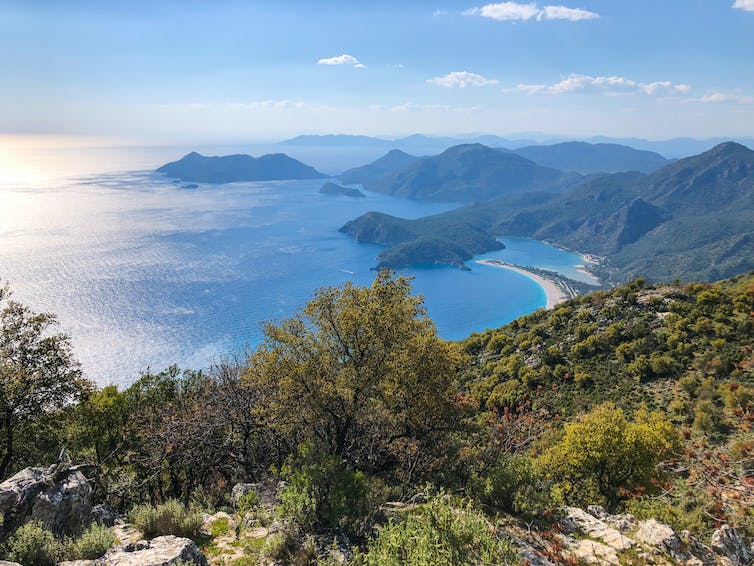Life exists in every conceivable environment on Earth, from the peaks of towering mountains to the remote stretches of isolated islands, from sunlit surfaces to the darkest depths of the oceans. Yet, this intricate tapestry of existence isn’t spread uniformly.
For centuries, scientists have marveled at the extraordinary variety of species exhibited in tropical regions. The breathtaking biodiversity of the Amazon rainforest, the teeming life in Madagascar’s unique ecosystems, the species-rich cloud forests of Costa Rica – the tropics showcase nature’s opulence.
What makes the tropics so incredibly diverse?
Since the dawn of biodiversity studies, scientists have believed the predominant factor is climate – the long-term patterns of temperature, precipitation and other atmospheric conditions. Thinkers like Alexander von Humboldt set the stage in the early 19th century with their keen observations, highlighting how life-rich regions often shared certain climatic features. Fast-forward to the present, and scientists confidently correlate climate with biodiversity. Simply put, hotter, wetter, resource-rich regions are veritable cradles of life.
bodrumsurf/iStock via Getty Images Plus
Some climatic conditions spread across vast landscapes, while others appear fragmented, resembling isolated islands amid varying climates. This difference raises an intriguing question: Is an area’s biodiversity solely due to its climate? Or do the size and relative isolation of these climatic pockets influence the richness and abundance of species that thrive within them?
We are part of an international, interdisciplinary team interested in the puzzle of how the geography of climate and the global patterns of species diversity fit together. Geography of climate is a bigger part of the biodiversity picture than previously assumed, according to our study findings recently published in the journal Nature.
Marco Túlio Pacheco Coelho
Unraveling the geography of climate
Historically, to study global biodiversity patterns, researchers divided the world into equal area grids and counted the species in each square.
Our study diverged from conventional methods. Instead of focusing solely on specific geographical locations, we centered our attention on the unique climate profiles of regions. Essentially, we weren’t just looking at plots on Earth but every place that shared a particular set of climatic conditions. We then classified these conditions globally and meticulously counted the species – birds, mammals, amphibians and reptiles – that live within the boundaries of each climate.
Marco Túlio Pacheco Coelho
Central to our investigation was an exploration of the geography of these climates, examining both their size and isolation. Some climates are widespread and common, sprawling over vast areas. Others are more fragmented, emerging as isolated pockets amid different climatic zones, reminiscent of islands in a vast ocean of other diverse climates. Consider tropical climates: They cover vast expanses cumulatively, despite being broken up into smaller, unconnected bits, even on different continents.
Our findings were illuminating. Climate, of course, was an important factor in how many species flourished in a location. But we were intrigued to find that about a third of the variation we found in species diversity across the globe can be attributed solely to the size and degree of isolation of all the instances of a particular climate.
bogdanhoria/iStock via Getty Images Plus
Biodiversity responds not just to the type of climate but its spatial distribution. Beyond the known effects of warmth and moisture, we found that larger and more isolated climates foster greater species diversity. Moreover, these expansive, broken-up climates not only housed a greater number of species but also nurtured a more unique combination of species.
By leveraging but transcending traditional methodologies, our approach unearthed novel insights about the geographical characteristics of climates. We discovered that the larger a climatic zone is, the more fragmented and scattered it tends to be across the landscape.
Isolation spurs diversity
Ciprian Boiciuc/Unsplash, CC BY
Traditionally, scientists have thought of tropical climates as cohesive expanses, standing as barriers between the distinct extra-tropical climates of our planet’s poles. Our analysis confirmed that cooler extra-tropical climates are relatively well connected across much of the planet.
Yet, our findings reveal a different narrative for the tropics: Tropical climates appear more as fragmented islands amid a sea of diverse climates, rather than expansive, interconnected realms. Our revelation underscores that tropical climates, while abundant, are dispersed and disjointed across the Earth’s surface.
Drawing a parallel, consider how mountainous regions harbor isolated valleys where people speak distinct dialects shaped by their seclusion. Nature mirrors this: Species in isolated climatic niches evolve distinctly, creating a diverse and unique tableau of life.
The specter of climate change, however, casts a long shadow over these insights. A world undergoing rapid warming might witness once vast climates fragmenting further. Such shifts could challenge species, compelling them to traverse daunting landscapes to find suitable habitats. If these once expansive climates recede, it could disrupt the entire balance of species interactions.
Understanding the interplay between biodiversity and climate is not merely an intellectual pursuit. It provides direction in helping people protect and appreciate the diverse symphony of life in our evolving world.

